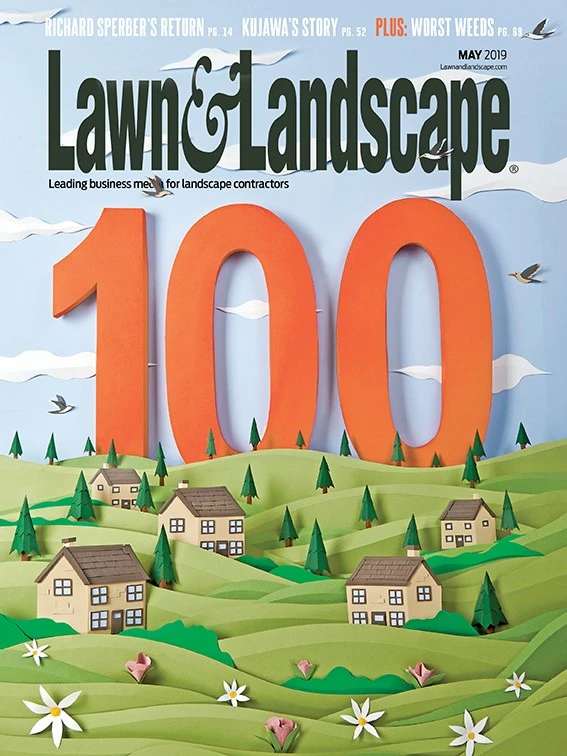
As the summer heat approaches all across the country, the rush to figure out which weed issues will be most prevalent – and how to stop them – is intensifying.
Largely due to increased rainfall, which can break down pre-emergent herbicides, a variety of troublesome weeds that require post-emergent herbicides are already growing this season. Because some of these weeds are emerging as long-term problems, such as doveweed, LCOs across the country are rethinking their tried-and-true programs to evolve with the changing weed pressures.
“It’s really given a lot of lawn care companies fits because what they used to do is not working on this weed,” says Laurence Mudge, Bayer’s Green Solutions Team manager, of doveweed. “You have to base the program on a good pre-emergent herbicide and post-emergent herbicide strategy.”
There’s all sorts of weeds on the rise that are causing problems in each region of the country. These are just a few of them:

NORTH: GREEN KYLLINGA.
Shannon Slevin has monitored the Mid-Atlantic region for Quali Pro for only about a year. Still, as a former golf course superintendent in New York and Connecticut, he’s long struggled with green kyllinga in the area.
“It’s very difficult to control just because of the amount of seedheads that it produces and how prolifically it spreads with the flow of water,” Slevin says. “It’s going to be a challenge moving forward, for sure.”
Green kyllinga is an annual sedge that starts to germinate in late spring and populates most frequently in low drainage spots or areas that are consistently wet. Given that last year was a wetter summer, Slevin says the weed was particularly rampant in 2018. He doesn’t expect that to change much this year, as it’ll be the main player in a market that was slammed with precipitation this winter.
Slevin says products with active ingredients like imazosulfuron will most consistently rid of green kyllinga and similar hedges. Waiting too long to notice it though is challenging because it typically requires a few applications.
“The biggest thing is to be proactive with it,” Slevin says. “Once you do spot it, get some chemical control out there and it’s normally two or three different (applications) with a non-ionic surfactant to keep it on the leaf blade and get it into the plant.”
Slevin also mentioned purple violet and Japanese stiltgrass as emerging problems, the latter of which is particularly difficult to control. For these, he recommends looking into herbicides with dicamba, quinclorac and 2,4-D as active ingredients.

SOUTH: KHAKI WEED AND DOVEWEED.
Quali Pro’s Jake Wylie is in a unique situation. He manages Texas, a state so large that it has multiple and distinct environments within its own borders alone. Out east, it’s humid and wet, whereas the western portion of the state is more arid and dry.
This is where plants like Khaki weed are prominent. Most pre-emergence herbicides are unsuccessful, Wylie says, but herbicides with the active ingredient metsulfuron methyl or dicamba can help knock back the weeds without doing too much damage to a Bermudagrass base. He cautions against using carfentrazone-ethyl as it can leave patches of bald turf throughout a property.
Wylie’s territory also stretches from Arkansas to California, and he’s noticed Khaki weed is growing to become a problem throughout his region.
“We’re seeing Khaki weed spread more and more,” Wylie says. “I would say that I’ve been fighting that particular weed for 20 years, and I’ve seen more and more of it moving east. It’s a very troublesome weed and it grows very well in compacted soil.”
Out in the southeast part of the country that Wylie doesn’t spend as much time in, Mudge says doveweed continues to be a major issue. That’s because doveweed germinates much later than other weeds, so when pre-emergence herbicides are applied, doveweed often hasn’t even started growing yet. Many of those aren’t always effective anyway, and it doesn’t help that they’re often applied so early that they miss the doveweed entirely.
Mudge says doveweed is often confused for other grasses, which makes it difficult for technicians to spot because it blends in with centipede grass and St. Augustine grass. He adds that people overirrigating their lawns can exasperate the doveweed problem.
“Sometimes doveweed is considered to be like a cancer,” Mudge says. “Once you get it, it just spreads all over the place. Before you know it, you’ve got a real problem on your hands.”
Post-emergence herbicides with active ingredients like foramsulfuron, halosulfuron-methyl, thiencarbazone-methyl, iodosulfuron-methyl-sodium and dicamba will help, though Mudge recommends pre-emergent solutions that include the active ingredient indaziflam.
EAST: GOOSEGRASS and DALLISGRASS.
Out east, goosegrass continues to be a problem. It’s a summer annual grass so it germinates in late spring and misses some pre-emergent applications, plus it can withstand high traffic areas like sports fields or populated landscapes.
To combat this, PBI Gordon’s research scientist Eric Reasor suggests post-emergent herbicides with active ingredients like foramsulfron and carfentrazone-ethyl.
Reasor spends plenty of time in Alabama and southern states closer to the East Coast, but parts of Tennessee, Virginia and even North Carolina also struggle mightily with dallisgrass, a cool-season grass exasperated by heavy rainfall in those areas as water spreads its seeds.
He says herbicides with foramsulfuron or halosulfuron-methyl work, but those products might not be safe for cool-season grasses. Fluazifop-P-butyl-based herbicides might help, too.
Coast to coast: Weeds like goosegrass and dallisgrass are familiar problems in the east, while those out west are dealing with winter annuals that have already germinated.
WEST: WINTER ANNUALS.
Whereas getting to doveweed is difficult because it germinates so late, some winter weeds that germinate early are problematic in their own right.
Syngenta’s Dean Mosdell says most technicians don’t put down pre-emergent herbicides down during the fall because they might not renew contracts and service that lawn the next year. As a result, winter annuals could grow quickly if left unchecked for too long and if the winter is particularly wet.
Weeds like swinecress, brassbuttons and yellow mustard flowers have already started growing this season. Mosdell says apply three-way phenoxy herbicide mixtures as early as possible. A mixture that contains a higher amount of dicamba or fluroxypyr is preferred, he says.
He also says they’re already seeing an abundance of grassweeds like bermudagrass. California bur clovers are also a problem, and in places where lawns are comprised of cool-season grasses, there’s an increase in competition between those lawns and bermudagrass, dallisgrass and crabgrass.
“20 years ago, I moved out to the area and it was hard to find crabgrass in the Pacific Northwest,” Mosdell says. “Now, it’s so much easier.”

Explore the May 2019 Issue
Check out more from this issue and find your next story to read.
Latest from Lawn & Landscape
- Retargeting Ads – A Secret Weapon for Growing Your Lawn Care Business
- Leading a growing company
- Project EverGreen launches Clean Air Calculator
- Rain Bird acquires smart lawn care company OtO from Toronto
- PBI-Gordon names Marvin as VP of research and development
- Mean Green rolls out Vanquish Autonomous mower
- Focal Pointe launches new podcast series
- Navigating due diligence checklist for selling lawn business





